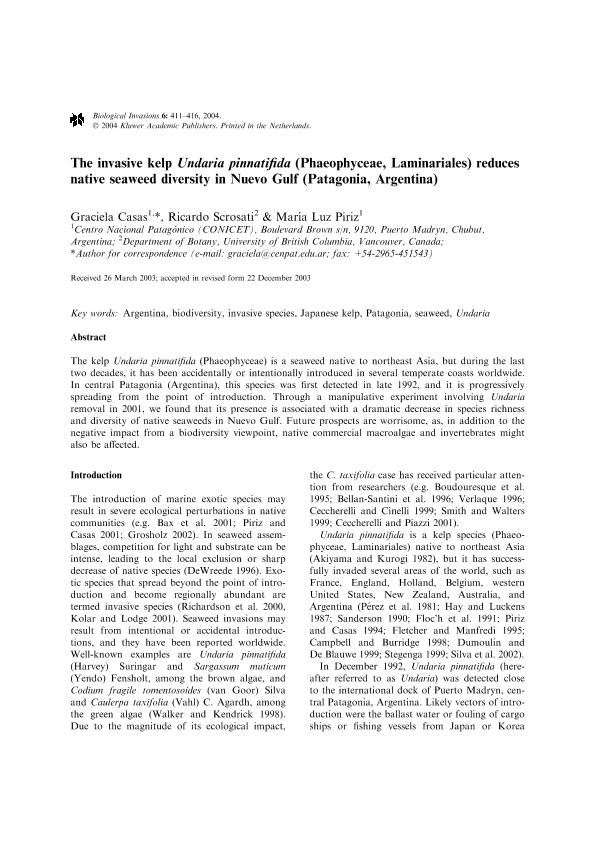Artículo
The invasive kelp Undaria pinnatifida (Phaeophyceae, Laminariales) reduces native seaweed diversity in Nuevo Gulf (Patagonia, Argentina)
Fecha de publicación:
12/2004
Editorial:
Kluwer Academic/plenum Publ
Revista:
Biological Invasions
ISSN:
1387-3547
e-ISSN:
1573-1464
Idioma:
Inglés
Tipo de recurso:
Artículo publicado
Clasificación temática:
Resumen
The kelp Undaria pinnatifida (Phaeophyceae) is a seaweed native to northeast Asia, but during the last two decades, it has been accidentally or intentionally introduced in several temperate coasts worldwide. In central Patagonia (Argentina), this species was first detected in late 1992, and it is progressively spreading from the point of introduction. Through a manipulative experiment involving Undaria removal in 2001, we found that its presence is associated with a dramatic decrease in species richness and diversity of native seaweeds in Nuevo Gulf. Future prospects are worrisome, as, in addition to the negative impact from a biodiversity viewpoint, native commercial macroalgae and invertebrates might also be affected.
Palabras clave:
Argentina
,
Biodiversity
,
Invasive Species
,
Japanese Kelp
,
Patagonia
,
Seaweed
,
Undaria
Archivos asociados
Licencia
Identificadores
Colecciones
Articulos(CCT-CENPAT)
Articulos de CTRO.CIENTIFICO TECNOL.CONICET - CENPAT
Articulos de CTRO.CIENTIFICO TECNOL.CONICET - CENPAT
Citación
Casas, Graciela Noemi; Scrosati, Ricardo Augusto; Piriz, María Luz; The invasive kelp Undaria pinnatifida (Phaeophyceae, Laminariales) reduces native seaweed diversity in Nuevo Gulf (Patagonia, Argentina); Kluwer Academic/plenum Publ; Biological Invasions; 6; 4; 12-2004; 411-416
Compartir
Altmétricas




